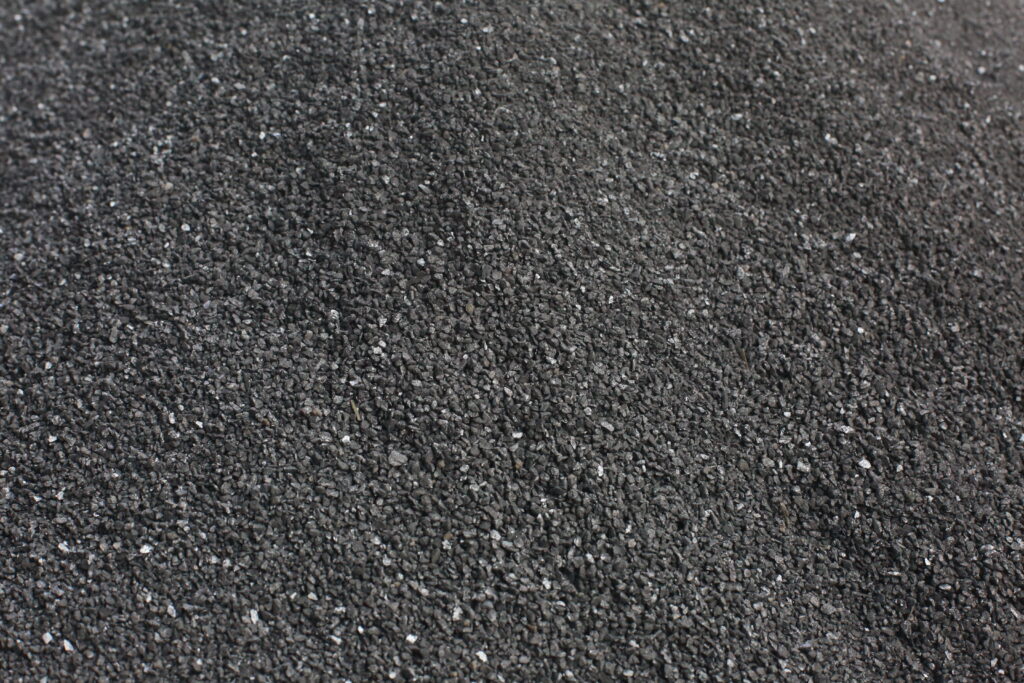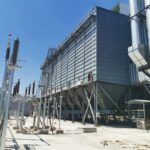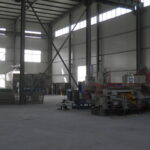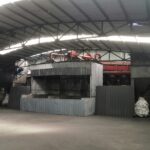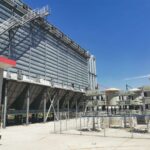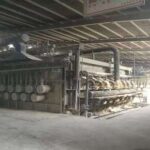Calcium Silicon Production Process
Calcium silicon, a kind of ferroalloy, is smelted in the furnace with other agents. We’ve introduced the production process of calcium silicon in the previous article “Calcium Silicon For Steel Making”, therefore, we won’t expatiate here, we only introduce it briefly in this article.
Generally speaking, CaSi production process has many procedures, like unblock the outlet, feed the furnace and control the equipment to perform a series of operations.
Before we talk about the environmental protection of calcium silicon production process, we must know about the origin of pollution. Only in this way, we take better and targeted measures to protect the environment.
In the production process of calcium silicon, there are many sources for different contaminants.
To begin with, for flue gas, it can be divided into high-temperature and low-temperature generally. Including, high-temperature flue gas mainly comes from submerged arc furnaces, while, waste heat boilers are main source of low-temperature flue gas. Next, noise belongs to pollution in many fields, CaSi production process is no exception. It comes from fans, conveyors, pumps, other equipment and so on. Furthermore, in the material preparation system, it produces exhaust gas. And as for other sources of pollution, we do not expatiate in this article.
Calcium Silicon Pollution Prevention And Control Measures
As we narrative above, we have known about some origins of pollutant. Now, we will talk about the control measures for these contaminants.
Waste Gas
In the production of calcium silicon, the prevention and control of air pollution are vital to maintaining environmental standards and ensuring sustainable operations. The dust generated in the material preparation system is efficiently collected by a bag filter, with the collected dust returned to the batching bin, while the exhaust gas is channeled through an 18-meter high exhaust pipe. The use of advanced filtration systems, such as bag filters and electrostatic precipitators, plays a crucial role in minimizing particulate emissions at various stages of the production process.
The main equipment, a 33MVA submerged arc furnace, adopts a semi-closed rotary design, equipped with three flue outlets on top of the fume hood. An electric lifting curtain on the furnace side wall helps to reduce heat radiation and soot emissions. High-temperature flue gases from the submerged arc furnace are directed into a waste heat boiler to generate electricity through steam, while low-temperature gases are purified by a bag filter before being released through a 22-meter high exhaust stack. This system, incorporating six alternating smoke outlet hoods, connects to an integrated flue gas dust removal system that ensures efficient capture of pollutants.
Furthermore, a fume exhaust hood, with three side enclosures, is placed above the casting ingot mold. The smoke produced during the casting process is funneled into the electric furnace’s flue gas dust removal system via an exhaust pipe. These combined measures—advanced filtration, heat recovery and effective exhaust systems —— significantly reduce emissions, ensuring a cleaner and more environmentally responsible production process. Regular monitoring and maintenance of these systems are critical to ensuring their continued efficiency and compliance with environmental regulations.
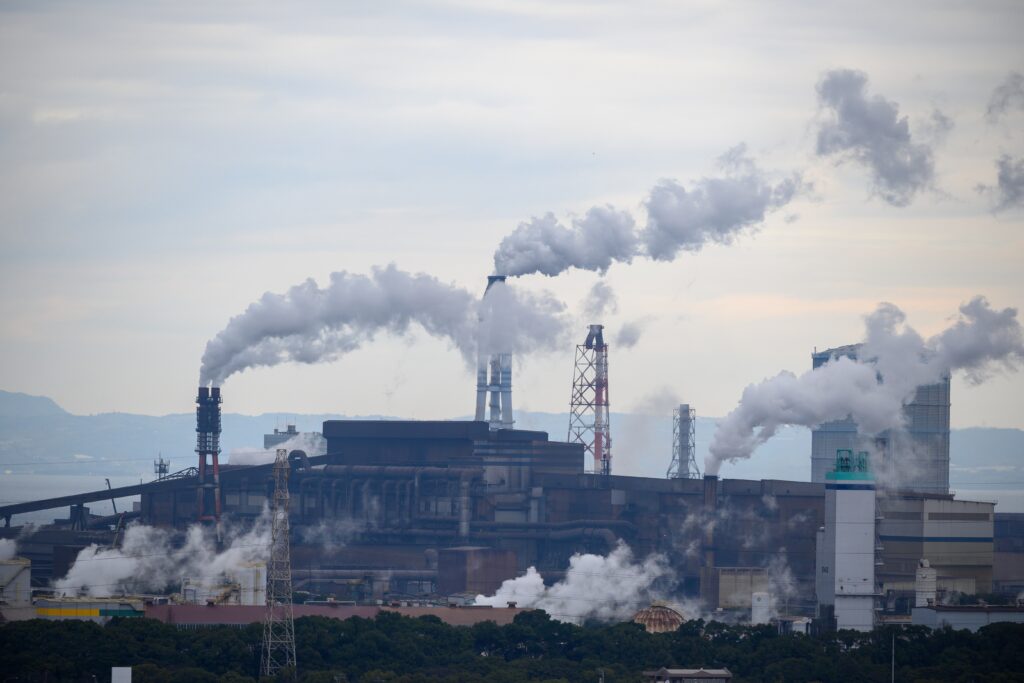
Waste Water
In CaSi alloy production process, we take circulating cooling measure to maintain the normal operation for many equipment that works at high temperature, such as handle, network and body of electric furnace; dust removal fan, transformer and so on.
No matter what it is water or waste water for washing silica, they are recycled without discharging to the outside after being cooling by water purification circulation pool or sedimentation process. What’s more, other sewage, like domestic or laboratory is treated by treatment device and it will not be discharged until it meets the discharge standard of contaminants.
Noise
When it comes to noise, I think most of people are annoyed with noise pollution. It is indispensable for people to find methods that reduce this pollution. And the most effective method is to nip it in the bud. For vibrated equipment, it should be installed a damping device or shock absorber; for equipment with strong noise, it should be installed a soundproof cover in it.
In pipeline design, it is important to incorporate anti-vibration and shock-absorbing measures to mitigate material wear, minimize vibration-induced noise, and ensure system durability.
To further address environmental and workplace noise, protective measures such as sanitation shelter belts and sound-insulating green belts are strategically implemented. These belts are positioned between the factory zone and office areas, as well as around workshops or departments prone to generating smoke, dust or excessive noise. By carefully planning the general site layout and adopting a rational spatial arrangement, the potential for noise overlap and interference is effectively minimized, creating a more harmonious and sustainable working environment.
Management Measures
Sewage
The easiest way to alert people is that put signs on the outlets of sewage, waste gas and noise according to the regulations. It is so obvious that makes supervision and monitoring convenient.
Environmental Incidents
Establishing and consummating emergency plan system for environmental emergencies according to the characteristics of contaminant hazards, analysis of main contaminants and so on. And establishing regular emergency drill system and evaluation system. In accordance with evaluation results, making corresponding rectification measures and implementing.
Impact
Surface Water
In general, sewage does not be generated by the production process of calcium silicon alloy. It is friendly for the environment. After cooling, cooling water used in this production process is recycled. And domestic sewage in the plant is treated and used in other fields, such as green irrigation, etc.
Air Quality
The high-temperature flue gas generated during submerged arc furnace smelting is entirely harnessed by a waste heat boiler for steam power generation, ensuring optimal energy recovery and utilization. Subsequently, the low-temperature flue dust produced by the waste heat boiler undergoes treatment through a bag filter system, after which the filtered emissions are discharged via the exhaust stack in compliance with environmental standards.
To further control emissions, a fixed collection hood is installed above the furnace outlet. This hood efficiently captures the flue gas, which is then directed by an exhaust fan into the exhaust duct. From there, the flue gas is conveyed to the electric furnace’s flue gas dust removal system for comprehensive treatment, ensuring minimal environmental impact and adherence to regulatory requirements. This integrated approach underscores a commitment to sustainable and environmentally responsible industrial practices.
Conclusion
With the commissioning of submerged arc furnace smelting project successfully, in the production technology of large-scale calcium silicon alloy, it breaks the limit and marks that the technology steps into a new stage. We think that it will recreate the splendour in the future absolutely. Furthermore, it plays a pivotal role in the ferroalloy realm to promote the sustainable development and upgrading.

